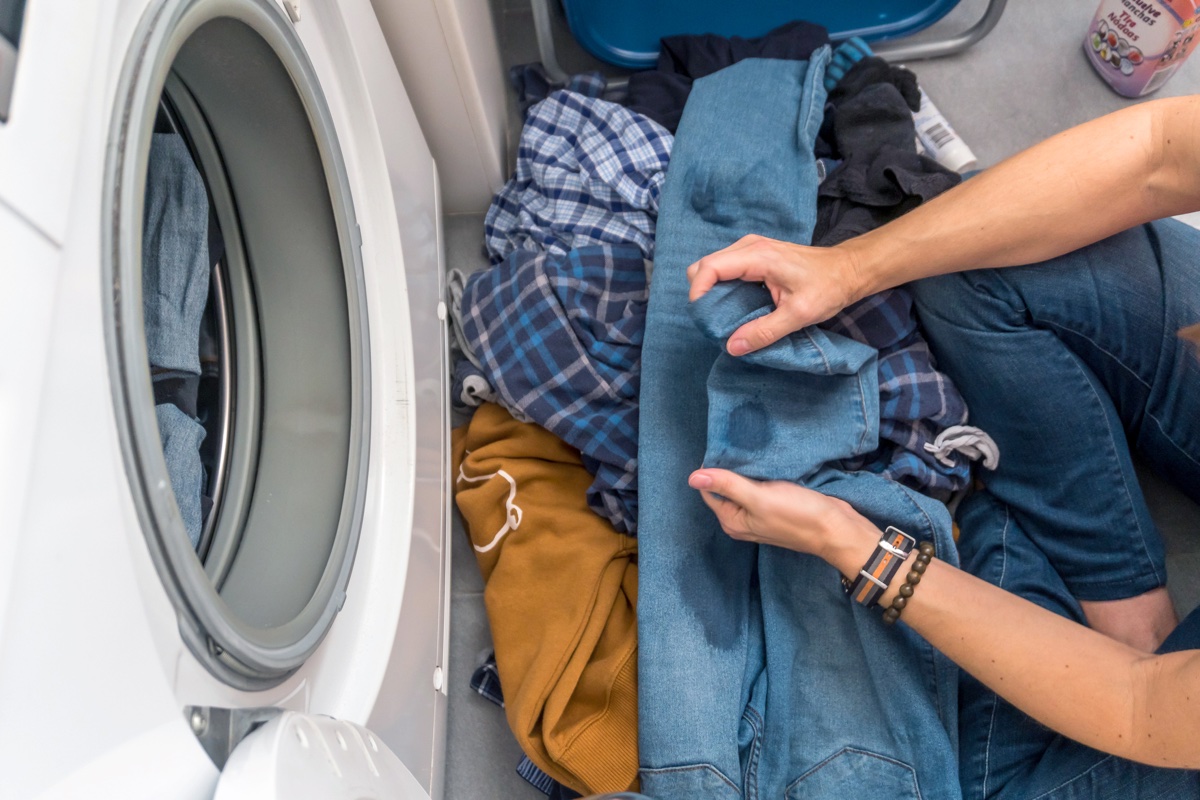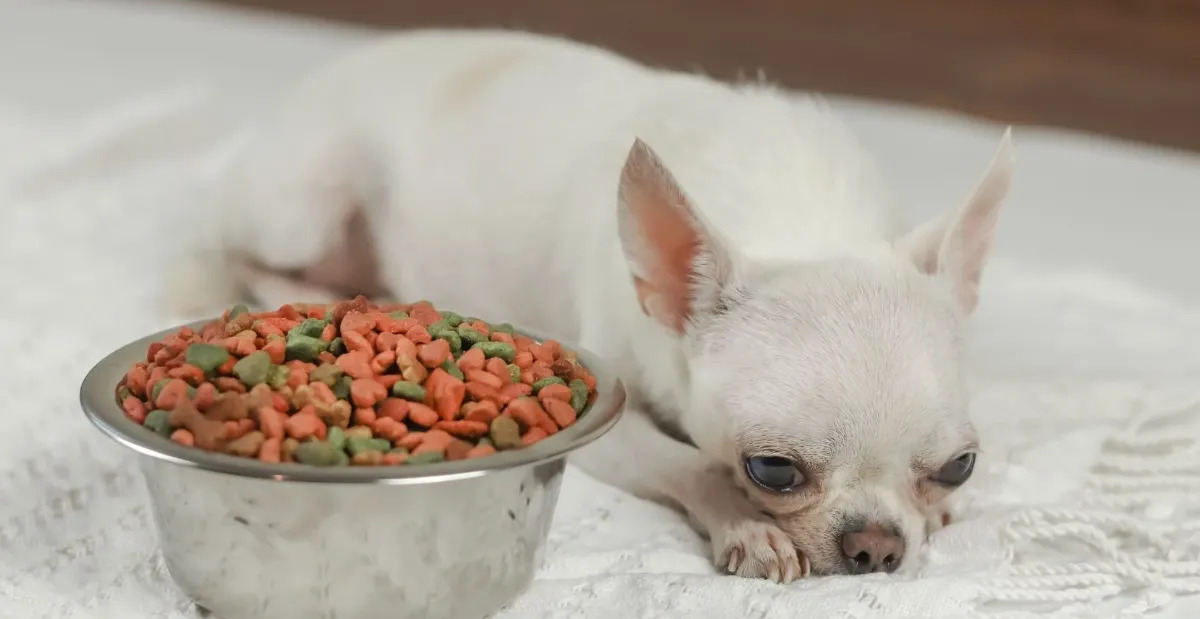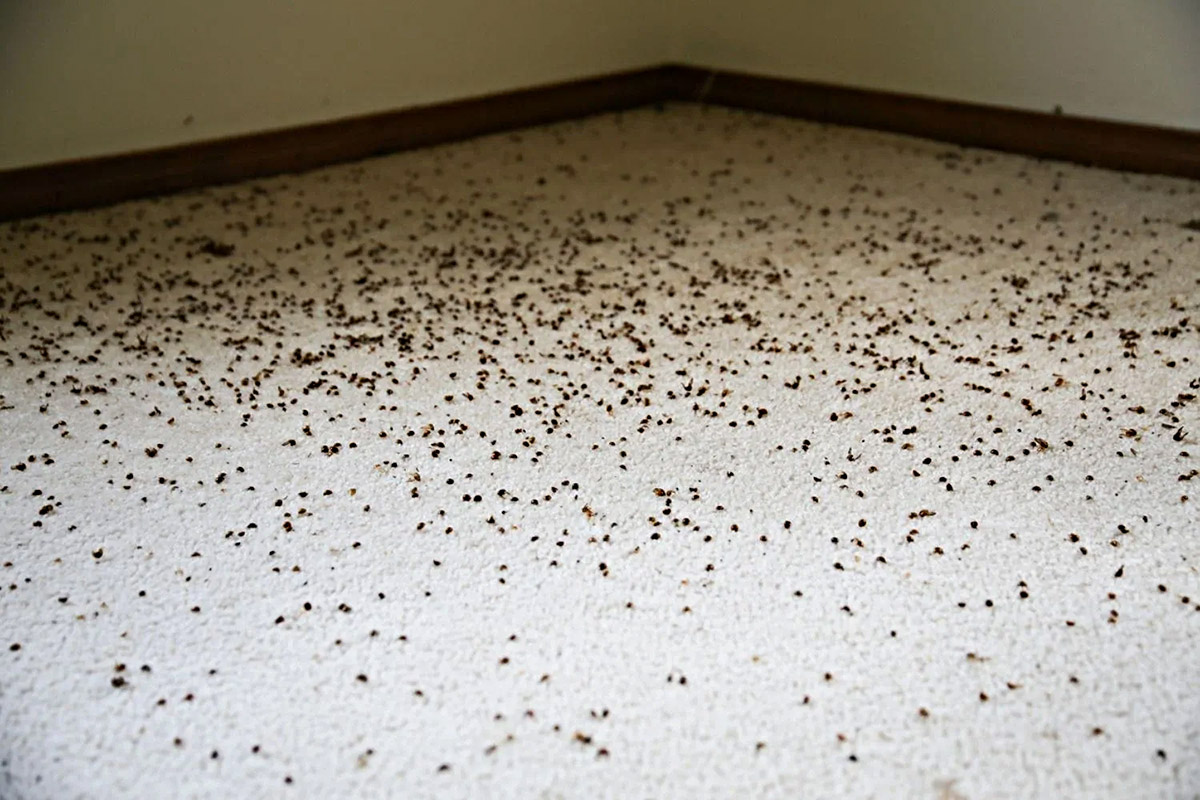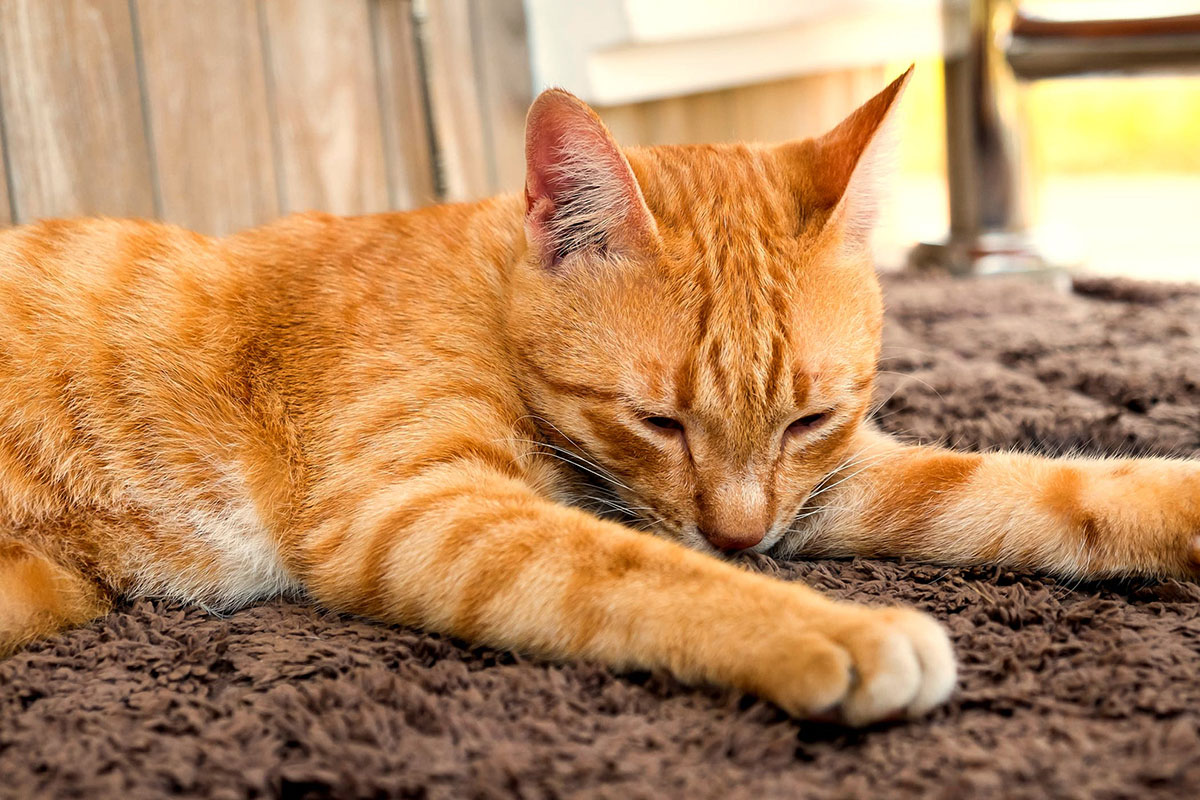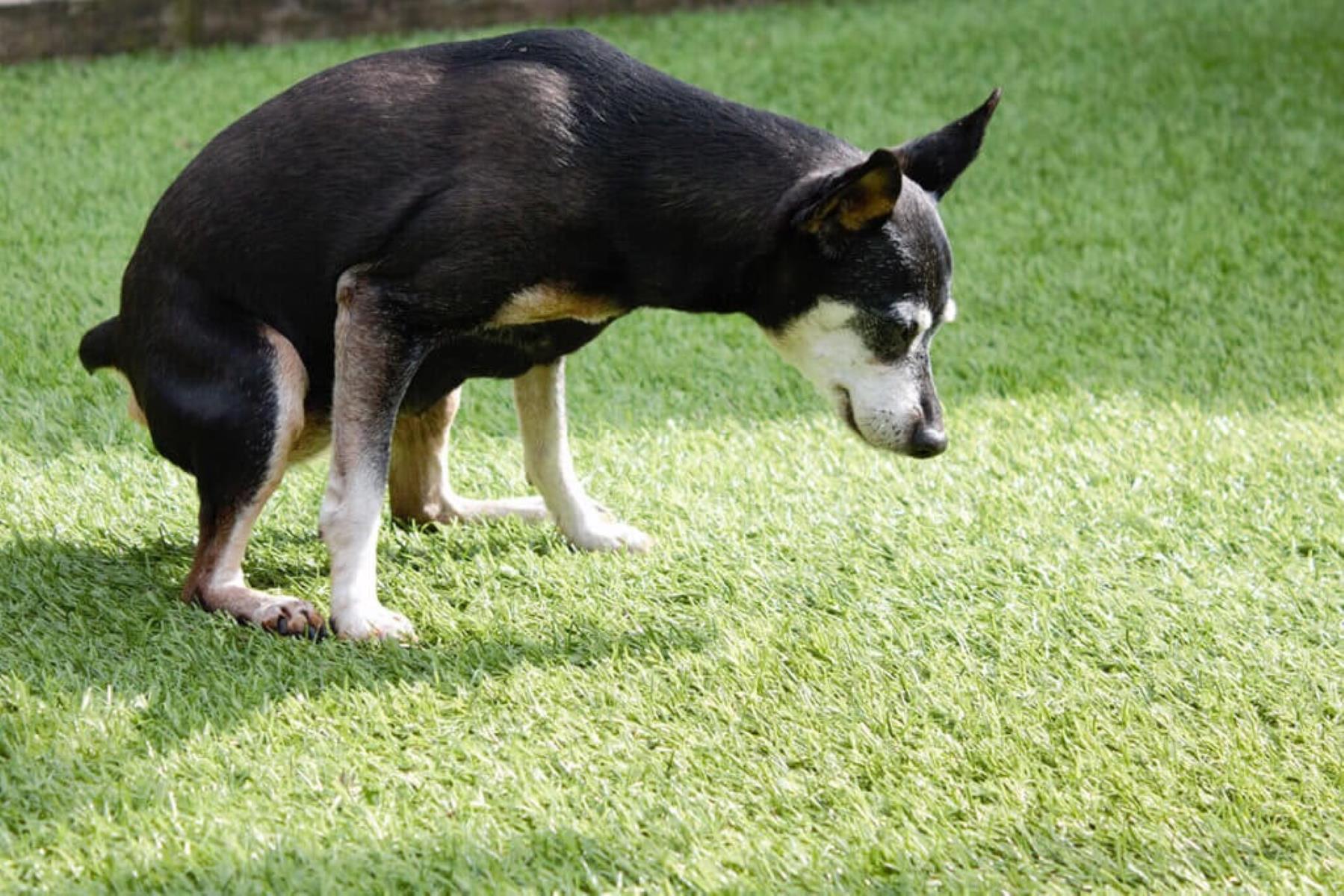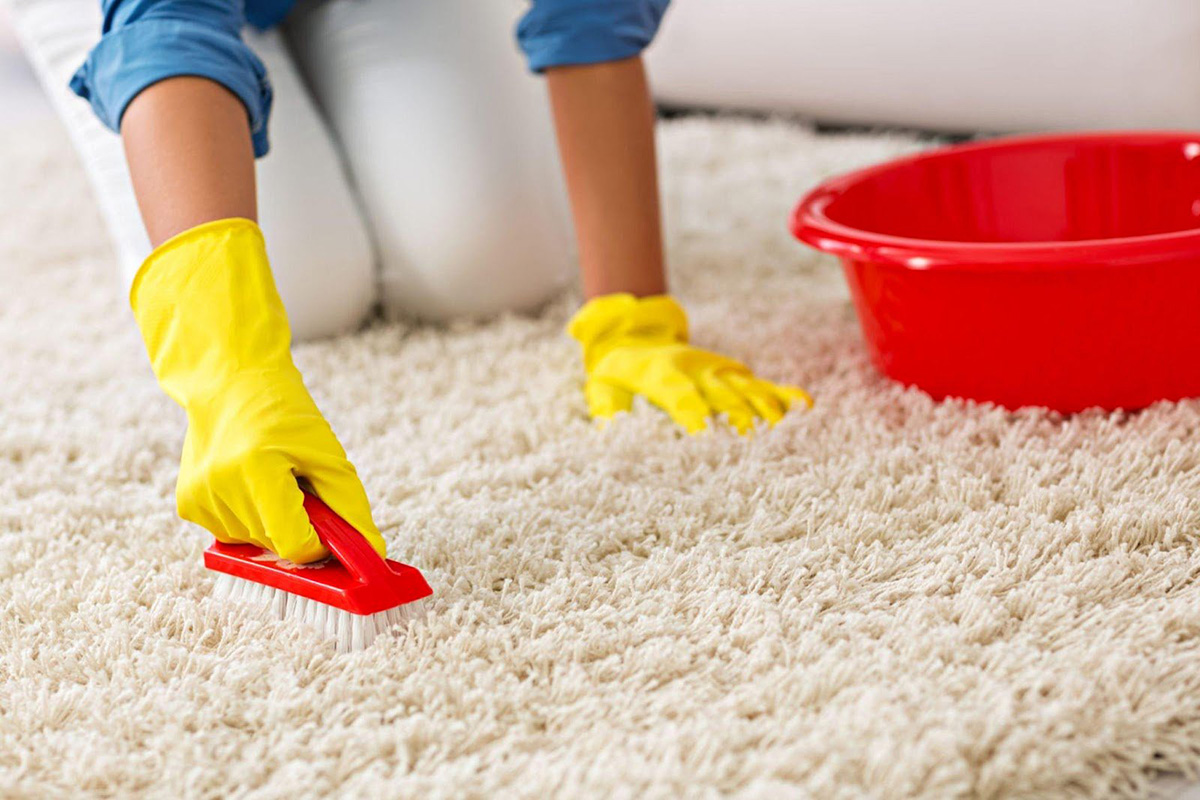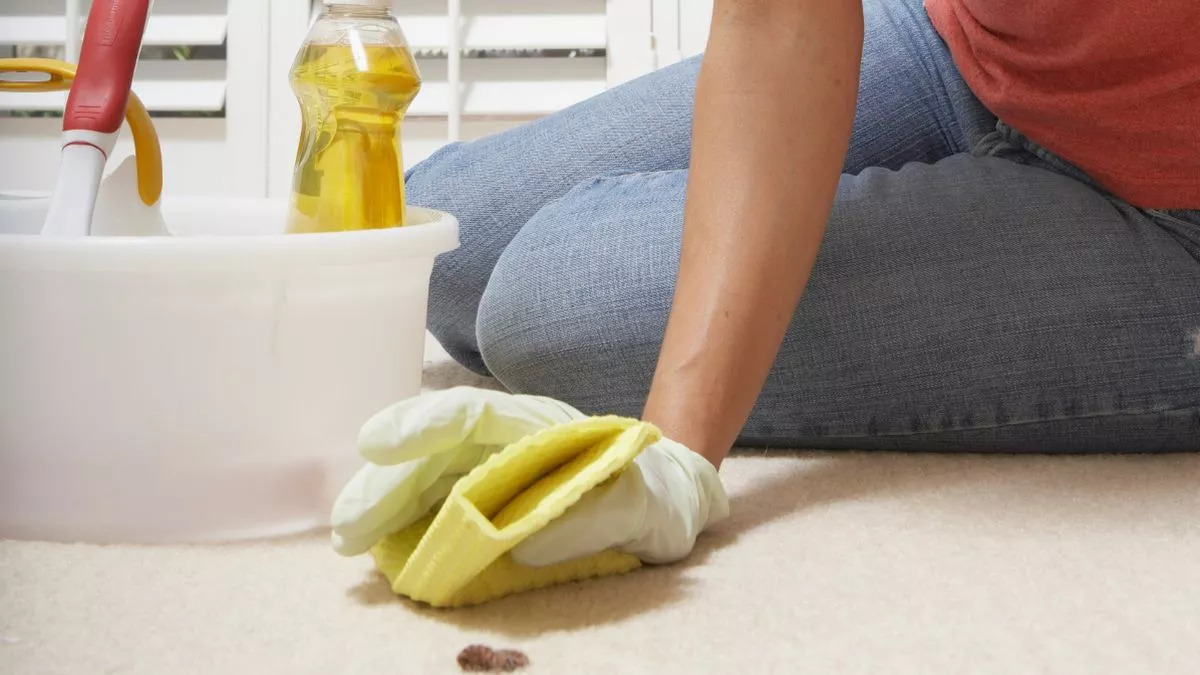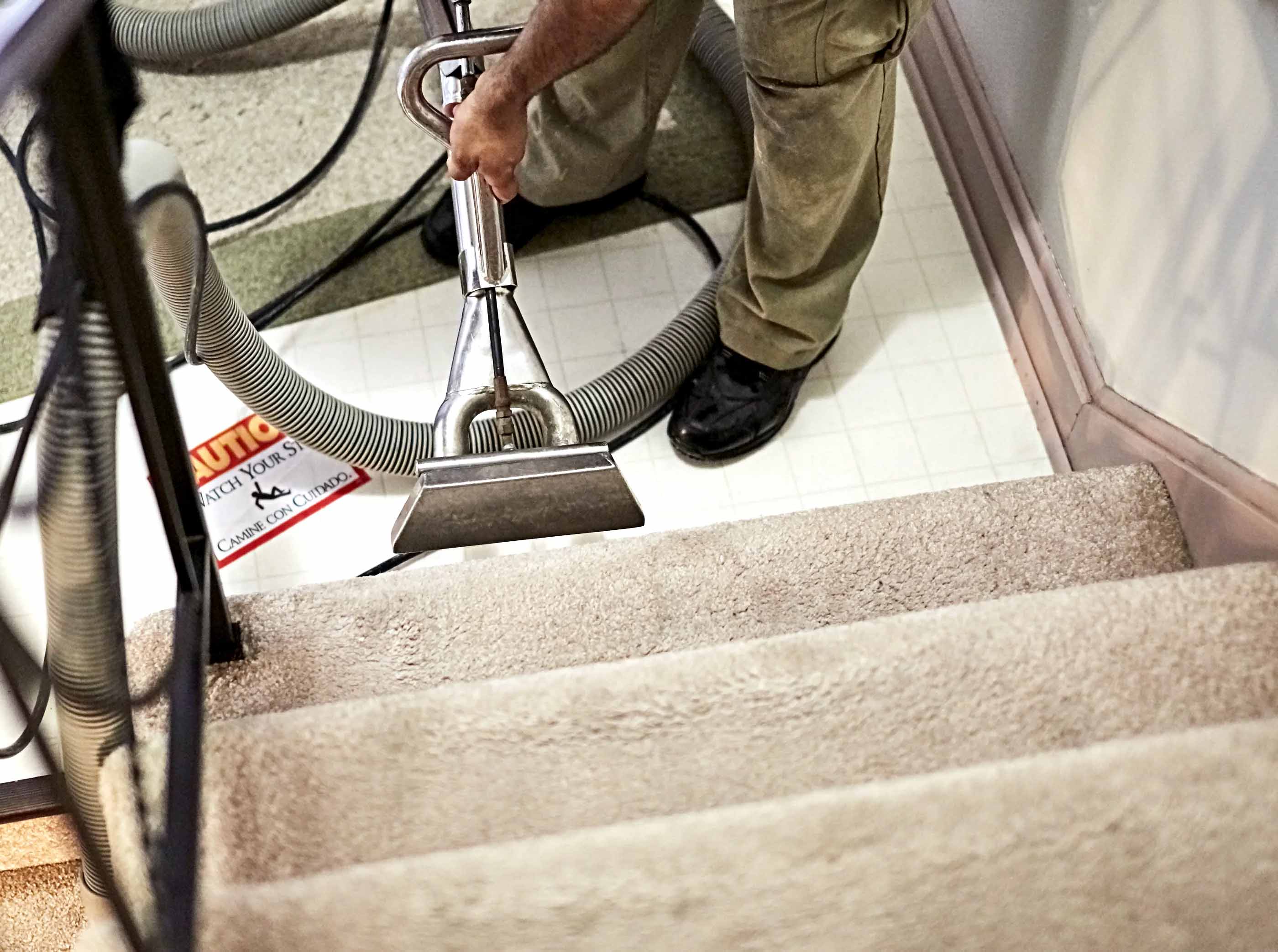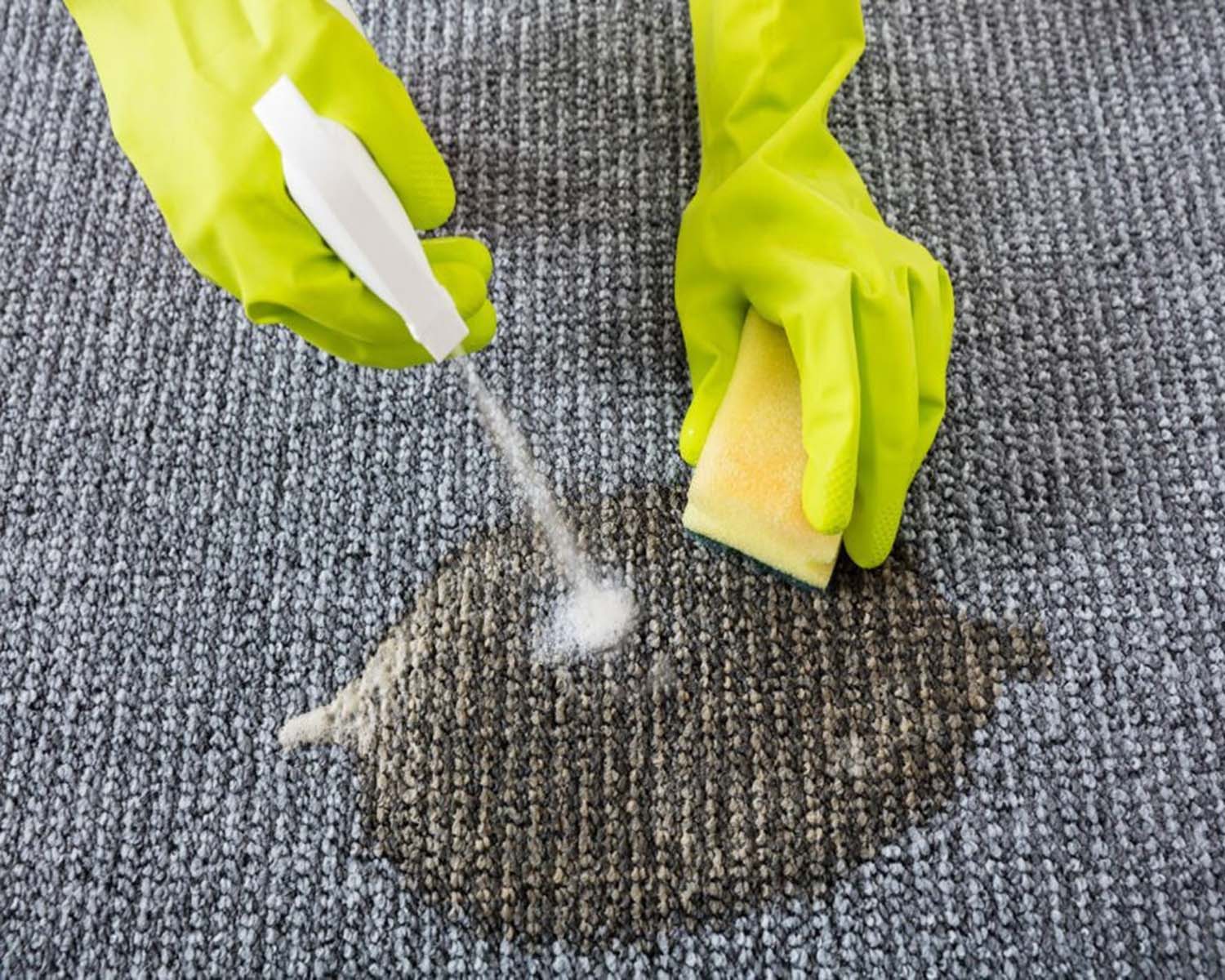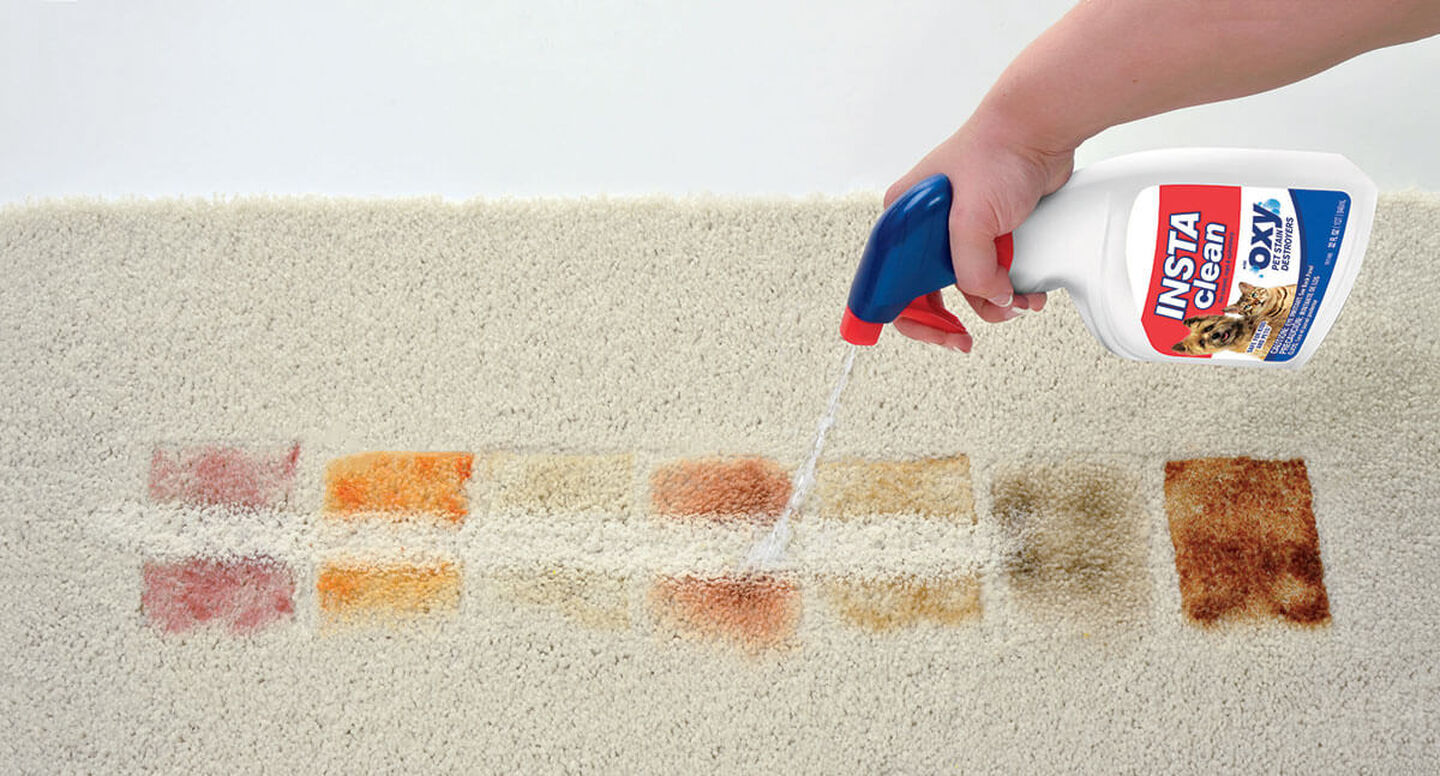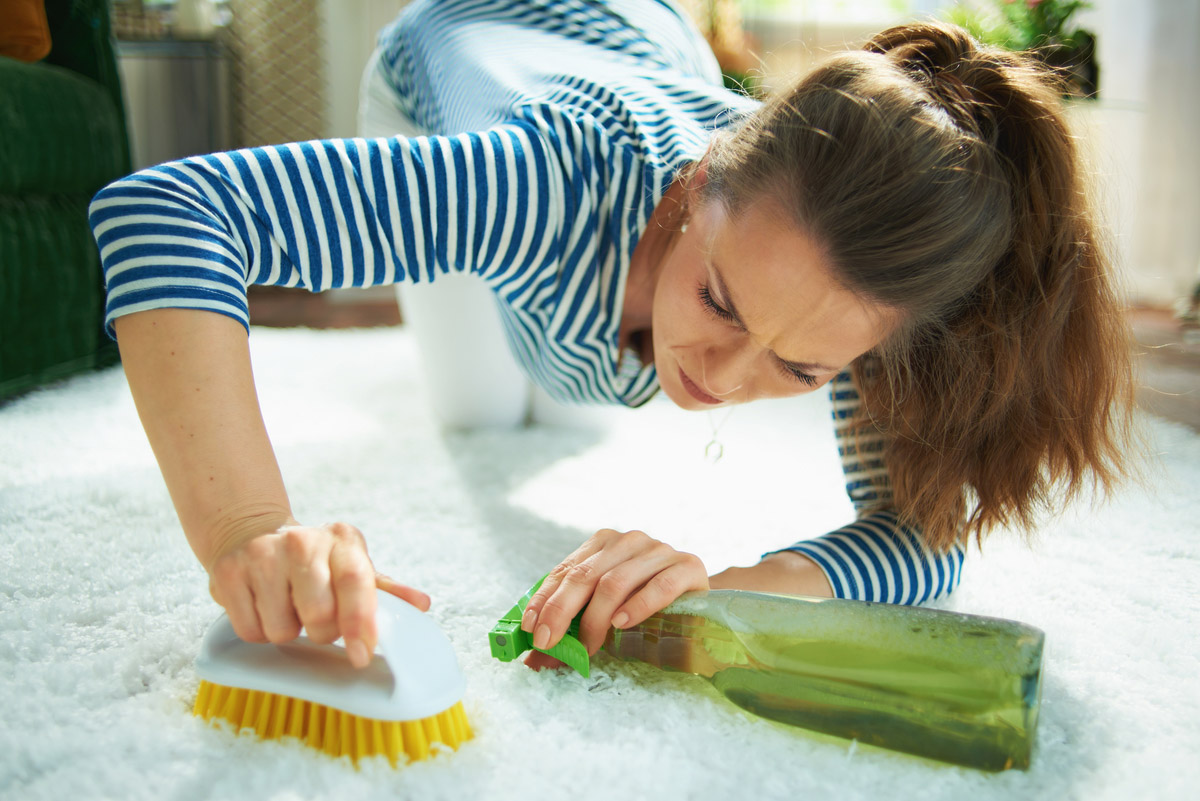

Articles
Why Do Carpet Stains Reappear
Modified: September 1, 2024
Discover why carpet stains keep coming back with our informative articles. Get expert tips and techniques to prevent stains from reappearing.
(Many of the links in this article redirect to a specific reviewed product. Your purchase of these products through affiliate links helps to generate commission for Storables.com, at no extra cost. Learn more)
Introduction
Carpet stains can be a real headache for homeowners. Just when you think you’ve managed to successfully remove a stain, it mysteriously reappears, tarnishing the cleanliness and appearance of your carpets. This phenomenon can leave you feeling frustrated and wondering why these stains keep coming back.
To understand why carpet stains reappear, we need to delve into the science behind carpet fibers and the factors that contribute to stain resurfacing. By uncovering the root causes, we can equip ourselves with the knowledge to prevent and tackle these recurring stains effectively.
So, why do carpet stains reappear? The answer lies in a combination of incorrect cleaning methods, capillary action, carpet padding, and environmental factors. Each of these elements plays a significant role in the reemergence of stains, and understanding their impact is crucial in finding a lasting solution.
In this article, we will explore the science behind carpet stains and delve into the factors that contribute to their reappearance. We will also provide helpful tips and strategies to prevent stains from resurfacing, ensuring your carpets stay clean and stain-free.
Key Takeaways:
- Understanding the science behind carpet stains and the factors contributing to their reappearance is crucial for effective prevention and treatment.
- Proactive measures, such as prompt spill cleanup, proper cleaning techniques, and controlling humidity levels, are key to maintaining clean and stain-free carpets.
Read more: Why Do Cats Pee On Carpet
The Science Behind Carpet Stains
Carpet stains occur when a substance, whether it be food, drink, or a liquid, comes into contact with the carpet fibers. The nature of the stain, whether it is water-based or oil-based, plays a significant role in how it adheres to the carpet.
Carpet fibers are made up of individual strands that are woven together. The fibers themselves are porous and absorbent, meaning they have the ability to absorb and trap substances within their structure. When a stain occurs, the liquid or substance seeps into the fibers and disperses, creating a visible and stubborn mark.
However, removing the stain from the surface of the carpet does not guarantee its complete removal. The stain often penetrates beyond the surface, seeping into the deeper layers of the carpet and sometimes even the carpet padding underneath. This is where the challenge arises, as the residue left behind in the fibers and padding can contribute to the reappearance of the stain.
The science behind carpet stains lies in the molecular structure of the substances themselves. Water-based stains, such as those caused by drinks or water spills, consist of molecules that are attracted to water. These stains can bond with the moisture in the carpet fibers, making them more difficult to remove completely.
On the other hand, oil-based stains, such as those caused by grease or oil spills, consist of molecules that repel water. These stains tend to adhere to the carpet fibers more stubbornly, as they do not mix well with water-based cleaning agents. Removing oil-based stains requires specialized cleaning techniques and solvents to break down and remove the oils from the carpet fibers.
Understanding the science behind carpet stains helps us approach the cleaning process more effectively. It reminds us that simply removing the surface stain is often not enough to prevent its reappearance. Proper cleaning methods, along with preventative measures, are essential to ensure that the stain is thoroughly eliminated and does not resurface.
Factors Contributing to Stain Reappearance
Several factors contribute to the reappearance of carpet stains, even after seemingly successful cleaning attempts. By understanding these factors, we can take necessary precautions to prevent stains from resurfacing. Let’s explore the main culprits behind stain reappearance.
Residue from Incorrect Cleaning Methods: One of the primary reasons for stain reappearance is the use of incorrect cleaning methods or improper cleaning products. When a stain is not entirely removed, residue can be left behind on the carpet fibers. This residue can attract dirt and debris, causing the original stain to reappear over time. It is crucial to use appropriate cleaning techniques and products that effectively lift the stain without leaving behind any residue.
Capillary Action and Wicking: Another factor that contributes to stain reappearance is capillary action. Carpet fibers have tiny channels within them that allow liquids to be absorbed deep into the carpet. During the cleaning process, if excessive moisture is used or if the stain is only partially removed, the remaining moisture can travel through these capillaries and bring the stain back to the surface. This phenomenon is known as wicking. To prevent wicking, it is essential to ensure thorough extraction of moisture during the cleaning process.
Stains Resurfacing from the Carpet Padding: In some cases, stains can reappear due to the presence of residue or moisture in the carpet padding underneath. When a stain has seeped beyond the surface of the carpet and reaches the padding, it can be challenging to remove completely. The residual stain in the padding can gradually migrate back up to the carpet fibers, resulting in the reappearance of the stain. If this is a recurring issue, it may be necessary to replace the affected carpet padding to prevent further stain reappearance.
Humidity and Carpet Stain Reappearance: Humidity levels in the environment can also play a role in stain reappearance. High humidity can cause the carpet fibers to absorb more moisture from the air, which can reactivate residual stains that were thought to be removed. Additionally, high humidity can contribute to the growth of mold and mildew, which can cause discoloration and stains on the carpet. Proper ventilation and dehumidification can help reduce humidity levels and minimize the chances of stain reappearance.
By understanding these factors, we can take proactive measures to minimize stain reappearance. Using proper cleaning techniques, ensuring thorough moisture extraction, addressing issues with carpet padding, and controlling humidity levels in the space can all contribute to preventing the frustrating reappearance of carpet stains.
Residue from Incorrect Cleaning Methods
One of the most common causes of stain reappearance on carpets is the residue left behind from incorrect cleaning methods. When stains are not properly treated and removed, residue from cleaning products can remain on the carpet fibers. This residue acts as a magnet for dirt and can cause the stain to reappear over time.
The use of improper cleaning products is often the root cause of residue buildup. Using harsh detergents, strong chemicals, or cleaners that are not specifically designed for carpets can leave behind a sticky residue. This residue can attract dirt and particles from foot traffic, causing the stain to gradually emerge once again.
Furthermore, inadequate rinsing of the carpet after cleaning can also lead to residue accumulation. If the cleaning solution is not thoroughly rinsed out, the drying process can leave behind a thin film of residue. This residue can act as a barrier, preventing the stain from being completely removed and allowing it to resurface over time.
Preventing residue buildup starts with using the right cleaning materials for the type of stain and carpet fibers. It is important to select cleaning solutions that are specifically formulated for carpets and are designed to effectively remove stains without leaving any residue behind.
In addition, proper rinsing is crucial in ensuring the complete removal of cleaning solution and preventing residue buildup. Extraction cleaning methods, such as steam cleaning or hot water extraction, can help remove not only the stains but also any residual cleaning solution or product residue. Thoroughly rinsing the carpet fibers will help to eliminate any remaining traces of cleaner, leaving the carpet clean and residue-free.
Regular maintenance and professional cleaning are also important in preventing residue accumulation. Professional carpet cleaners have the expertise and equipment to effectively clean carpets without leaving behind any residue. Regularly scheduling professional cleanings can help remove any buildup or residue that may be hiding within the carpet fibers.
By being mindful of the cleaning products used, ensuring proper rinsing techniques, and seeking professional cleaning services, you can minimize the chances of residue buildup and prevent the reappearance of carpet stains. Taking proactive measures to eliminate residue will not only keep your carpets looking cleaner for longer but also extend their lifespan.
Capillary Action and Wicking
Capillary action and wicking play a significant role in the reappearance of carpet stains. Understanding these processes can help us address the root cause of stain resurfacing and prevent it from happening.
Capillary action refers to the ability of liquids to flow in narrow spaces, such as the tiny channels within carpet fibers. When a liquid spills onto a carpet, it can penetrate deep into the fibers through capillary action, spreading the stain beyond the surface area. If not properly treated, the residual liquid within the carpet fibers can later rise back to the surface, resulting in the reappearance of the stain.
Wicking is closely related to capillary action. It occurs when moisture, including cleaning solutions or residual stains, is not adequately extracted from the carpet during the cleaning process. The moisture remains trapped within the carpet fibers, and as the carpet dries, it can draw the stain’s residue or moisture from the lower layers back up to the surface. This phenomenon is known as wicking, and it can cause the stain to reappear, often in a larger and more noticeable form.
To prevent capillary action and wicking, it is crucial to address stains promptly and employ proper cleaning techniques. Here are some tips to effectively tackle these issues:
- Blot, don’t scrub: When a spill occurs, gently blot the area with a clean cloth or paper towel to absorb as much liquid as possible. Avoid scrubbing, as it can push the stain deeper into the carpet fibers, making it harder to remove.
- Use the right cleaning products: Choose cleaning products specifically formulated for carpets and the type of stain. Follow the instructions and apply the cleaner in moderation to prevent excessive moisture and minimize the risk of wicking.
- Thoroughly extract moisture: After cleaning, use an extraction machine or blot the area with a clean, absorbent cloth to remove as much moisture as possible. This step is crucial in preventing wicking and ensuring that the stain is not reintroduced to the carpet fibers.
- Consider professional cleaning: For stubborn stains or if you’re unable to eliminate wicking on your own, it may be necessary to seek the assistance of professional carpet cleaners. They have specialized equipment and expertise to properly extract moisture, preventing wicking and minimizing the chances of stain reappearance.
By being proactive in treating stains, using appropriate cleaning techniques, and ensuring thorough moisture extraction, you can effectively combat capillary action and prevent wicking. Taking these precautions will help maintain the cleanliness and appearance of your carpets, ensuring that stains do not resurface over time.
Use a white cloth to blot up as much of the stain as possible before applying a cleaning solution. This will help prevent the stain from reappearing.
Read more: Why Do Dogs Dig In The Carpet
Stains Resurfacing from the Carpet Padding
When it comes to carpet stains, sometimes the culprit for their reappearance lies within the carpet padding. Carpet padding serves as a cushioning layer between the carpet and the floor. While it provides comfort and insulation, it can also contribute to the resurfacing of stains.
When a stain occurs on the carpet, especially a liquid or water-based stain, it has the potential to penetrate beyond the surface fibers and reach the carpet padding. This is particularly likely if the spill was substantial or if it wasn’t promptly and thoroughly cleaned. The liquid can seep into the padding, leaving behind a lingering residue that can resurface over time.
The carpet padding acts as a sponge, soaking up the liquid and trapping the stain-causing substances within its porous structure. Even if the surface of the carpet appears clean, the residual stain in the padding can gradually migrate back up to the carpet fibers, leading to the reappearance of the stain.
To prevent stains from resurfacing due to carpet padding, it is important to take the following steps:
- Promptly treat stains: Act quickly when a stain occurs on your carpet. Blot the spill gently and use appropriate cleaning methods to minimize the chances of the stain reaching the carpet padding.
- Thoroughly clean the affected area: When cleaning a stain, make sure to not only treat the surface of the carpet but also pay attention to the underlying layers. Use appropriate cleaning techniques and products that can help remove the stain from both the carpet fibers and the padding underneath.
- Consider professional cleaning: If you’re unable to eliminate the stain from the carpet padding on your own, it may be necessary to hire professional carpet cleaners. They have the expertise, tools, and equipment to effectively clean and treat stains, ensuring that they are removed from all layers of the carpet.
- Replace carpet padding if necessary: In cases where a stain has deeply penetrated the carpet padding or if it keeps resurfacing despite your efforts, it may be necessary to replace the affected padding. This can help eliminate any residual stains and prevent further reappearance.
By addressing stains promptly, thoroughly cleaning the affected area, and considering professional help if needed, you can effectively prevent stains from resurfacing due to the carpet padding. Taking these preventive measures will help maintain the cleanliness and appearance of your carpets, ensuring that stains are eliminated and do not reappear over time.
Humidity and Carpet Stain Reappearance
Humidity levels in the environment can have a significant impact on the appearance and reappearance of carpet stains. High humidity can contribute to the resurfacing of stains and create favorable conditions for mold and mildew growth, leading to discoloration and staining of the carpet fibers.
High humidity can cause moisture to accumulate in the air, and this excess moisture can be absorbed by the carpet fibers. When the carpet absorbs excessive moisture, it can reactivate residual stains that were previously treated or removed. The moisture acts as a catalyst, causing the stain molecules to become mobile again and move to the surface of the carpet, resulting in stain reappearance.
In addition to the reactivation of residual stains, high humidity can promote the growth of mold and mildew. These fungal organisms thrive in moist environments, and carpets can provide an ideal breeding ground for them. Mold and mildew not only cause unsightly stains but also emit a musty odor and pose health risks to occupants of the space. Stains caused by mold and mildew growth can be particularly challenging to remove, requiring specialized cleaning techniques and treatments.
To prevent the impact of humidity on carpet stain reappearance, consider the following tips:
- Maintain optimal humidity levels: It is recommended to keep indoor humidity levels between 40% and 60%. Use dehumidifiers or ventilation systems to control humidity, especially in areas prone to high moisture, such as bathrooms, basements, and kitchens.
- Act quickly on spills and moisture: Promptly attend to any liquid spills or wet areas on the carpet. Blot the moisture promptly and thoroughly dry the affected area using towels, fans, or dehumidifiers to prevent the moisture from being absorbed by the carpet fibers.
- Ensure proper ventilation: Good airflow is crucial in preventing moisture buildup. Keep windows open, use fans or air conditioners to promote air circulation, and avoid trapping moisture in enclosed spaces.
- Use moisture-resistant carpet padding: Consider using moisture-resistant padding underneath the carpet, as it can help minimize the absorption of moisture and prevent stains from reaching the underlying layers.
- Regularly clean and maintain carpets: Regular vacuuming and professional carpet cleaning can help remove any moisture or dirt that might contribute to stain reappearance. It also discourages the growth of mold and mildew.
By controlling humidity levels, promptly addressing spills and moisture, and maintaining proper ventilation, you can minimize the instances of carpet stain reappearance caused by high humidity. Implementing these preventive measures will help keep your carpets clean, fresh, and free from recurring stains.
Prevention and Maintenance Tips
Preventing carpet stains from appearing or reappearing requires a combination of proactive measures and regular maintenance. By following these prevention and maintenance tips, you can keep your carpets looking clean and stain-free:
- Act promptly on spills: When a spill occurs, it’s crucial to address it immediately. Blot the spill gently with a clean cloth or paper towel to absorb as much liquid as possible, starting from the outer edges and working your way in. Avoid rubbing or scrubbing, as this can make the stain spread or embed it deeper into the carpet fibers.
- Use stain-resistant treatments: Consider applying a stain-resistant treatment to your carpets. These treatments create a protective barrier on the carpet fibers, making them more resistant to spills and stains. They can be applied by professional carpet cleaners or purchased as DIY products.
- Remove shoes indoors: Make it a habit to remove shoes before entering the house. This practice helps prevent outdoor dirt, debris, and stains from being tracked onto the carpets.
- Place mats and rugs strategically: Use mats or rugs in high-traffic areas and entryways to minimize the chances of dirt and stains reaching the carpet. These protective barriers can help capture dirt and prevent it from being ground into the carpet fibers.
- Regular vacuuming: Vacuum your carpets regularly to remove loose dirt, dust, and debris. This helps prevent particles from settling deep into the carpet fibers and causing stains. Use a vacuum cleaner with a rotating brush or beater bar for more effective cleaning.
- Periodic professional cleaning: Schedule professional carpet cleaning at least once a year, or more frequently for high-traffic areas. Professional cleaners have the expertise, equipment, and specialized cleaning agents to deep-clean your carpets and remove stubborn stains. Regular professional cleaning helps maintain the freshness and appearance of the carpet.
- Address stains immediately: If a stain does occur, address it promptly using appropriate stain removal techniques. Use clean water, mild detergents, or specialized stain removers as directed. Test any cleaning solution on a small, inconspicuous area of the carpet first to ensure it doesn’t cause discoloration or damage.
By implementing these prevention and maintenance tips, you can significantly reduce the chances of carpet stains appearing or reappearing. Taking proactive measures, such as acting promptly on spills, using protective treatments, and regularly cleaning and maintaining your carpets, will help keep them looking clean and extend their lifespan.
Conclusion
Carpet stains can be a frustrating issue for homeowners, especially when they seem to reappear even after thorough cleaning. However, understanding the science behind carpet stains and the factors contributing to their reappearance can help us tackle this problem effectively.
We’ve explored how carpet fibers absorb and trap stains, and how the molecular composition of stains affects their adherence to the fibers. We’ve also examined the role of residue from incorrect cleaning methods, capillary action, carpet padding, and humidity in stain reappearance.
Residue from improper cleaning techniques can attract dirt and cause stains to resurface over time. Capillary action and wicking can bring residual moisture and stains back up to the surface of the carpet. Stains can also migrate from the carpet padding, and high humidity levels can reactivate stains and promote mold and mildew growth.
To prevent stains from reappearing, it is essential to use proper cleaning methods, select suitable cleaning products, and ensure thorough rinsing and moisture extraction. Addressing carpet padding issues and controlling humidity levels through ventilation and dehumidification are also crucial.
Additionally, practicing preventive measures such as prompt spill cleanup, stain-resistant treatments, and removing shoes indoors can help minimize the chances of stains appearing or reappearing. Regular vacuuming and professional carpet cleaning also play a significant role in maintaining clean and stain-free carpets.
By incorporating these prevention and maintenance tips into your carpet care routine, you can keep your carpets looking fresh and vibrant while reducing the occurrence of stains and their reappearance.
Remember, the key is to be proactive, use proper techniques, and act promptly to address stains. With the right knowledge and habits, you can enjoy clean and stain-free carpets that enhance the beauty and comfort of your home.
Frequently Asked Questions about Why Do Carpet Stains Reappear
Was this page helpful?
At Storables.com, we guarantee accurate and reliable information. Our content, validated by Expert Board Contributors, is crafted following stringent Editorial Policies. We're committed to providing you with well-researched, expert-backed insights for all your informational needs.
